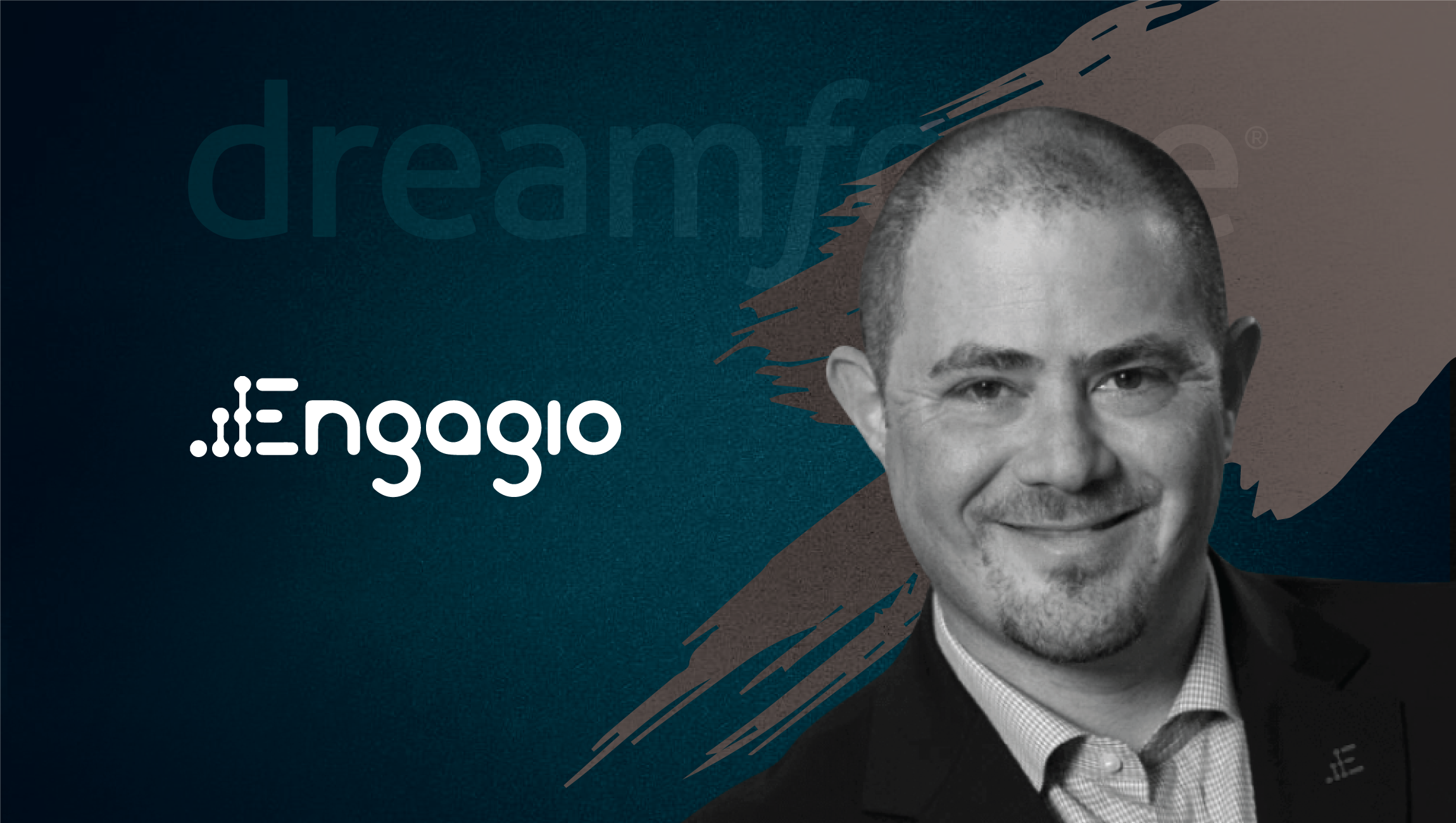Nadjya Ghausi
VP,Marketing, Prezi
In a startling revelation, leading Presentation Software provider – Prezi has reported that Millennials have a slightly longer attention span compared to Gen Xers’ or Boomers. The report finds engaging content with cinematic effect as the “golden ticket” to build a compelling interaction with the audience. To help our readers better understand the true definition of “Attention” and how Content Marketing teams could actually measure attention from the context of marketing performance, we spoke to Nadjya Ghausi, VP, Marketing, Prezi.
Html code here! Replace this with any non empty text and that's it.
How did you arrive at the idea of developing and publishing the State of Attention report?
A few years back, a Microsoft study claimed that the “human attention span is shorter than a goldfish’s.” If that’s the case, then why do people binge-watch a series for over six hours? If they can do that, why can’t they pay attention during a business meeting?
Working with Kelton Research, we conducted a new study, the 2018 State of Attention Report, to measure the effectiveness of branded content and business presentations and how they resonate with business professionals across demographics, including Millennials, Generation X, and Boomers. We surveyed more than 2000 business professionals and found that attention spans are *not* shrinking — rather, they are evolving to be more selective. We also found evidence that people’s ability to maintain focus has actually improved over time, despite an ever-growing mountain of available content. And, finally, we found the key to engaging content is a compelling narrative combined with stimulating visuals and dialogue.
In 2018, what’s the true definition of “Attention”? How do you measure attention from the context of marketing performance?
At Prezi, we define attention as “staying engaged, and focusing your mind on something.” It’s the act of zeroing in on a story, a presenter, a visual – but all at once. We strive to help presenters and content creators keep their audiences fully immersed in what they’re saying from start to finish, and that’s why treating attention as a valued commodity is so critical.
As marketers, it’s vital our audiences pay attention to the content we create and present. Our State of Attention survey concluded the attention of business professionals can be captured for long periods of time with compelling content that includes great stories and interesting, gripping visuals. Results from the study concluded that the costs of not keeping attention for business professionals are high, with one in five respondents admitting multitasking in meetings has caused them to make an error in their work–thus impacting their marketing performance. Results of the survey also concluded that more than half of the respondents say they can give a piece of content their undivided attention without getting distracted more now than they could one year ago–this could have positive ramifications on marketing performance.
When it comes to building a brand-customer connection, what is the winning recipe for any CMO today?
The winning recipe for any CMO is to ensure the user journey is optimized from beginning to end–and beyond. From awareness to consideration to purchase to retention to advocacy, it’s imperative that the CMO’s marketing team works closely with the product organization to develop campaigns, features, and processes that feed into the user journey and provide the best experience possible.
Once the purchase cycle is over, the work has just begun. It’s at this point that marketing, sales, and the product organization continue to drive engagement (through onboarding, follow-up “delight” emails, and training, among other things) and work to identify those customers who can become advocates–both internally and externally.
How does Generation Z disrupt the whole attention-engagement philosophy in marketing?
Generation Z grew up with the prevalence of visual storytelling around them, through social media channels, such as Instagram, Snapchat, Facebook and YouTube. These channels are all built on a foundation of using visuals to tell a compelling story. And these platforms use animation or motion to *catch* the attention of their audiences.
Generation Z’s tolerance level for media that is not engaging is even more pronounced than in other demographic groups. Because of this, captions and descriptive copy are totally secondary. So younger generations, who’ve spent their entire lives engaging with multiple streams of content that’s primarily visual, are conditioned to engage with it and respond to it. Because of this, the solution that applies to marketing professionals of all ages: create compelling content by including a strong narrative and gripping visuals.
Are customers more inclined to chase videos and live content over static ones? What’s the future of video in this low-attention era?
Customers are inclined to chase–and respond–to content that motivates, inspires, and *holds* their attention. As our State of Attention study proved, the attention of business professionals can be captured for longer periods of time with compelling content that includes a story with captivating visuals.
Video can be important, but it is only part of the story — business professionals often want to not only view content, but also interact with it — and are thus gravitating toward interactive content. For B2B audiences, interactive content better sets the stage for a two-way dialogue with their audiences, especially for remote use cases (webinars, meetings, and remote sales presentations). Audiences often won’t engage if they can’t interact. And while they may be selective in what they “tune in” to, once they do, they’re more apt to pay attention.
With interactive content, if you use analytics you can see exactly which content resonates best–which parts your customers or prospects engage with so you can refine and optimize your content on a much more granular level. For example, with a normal video you can see where the drop-off is, but with an interactive Prezi presentation, you can see engagement/interaction and drop-off at each part of the story and therefore adjust, iterate, or revise as is needed to make the content more engaging for specific people.
How should businesses unlock the value of bespoke content for better sales results?
What we have found to be most successful for our customers is when they make a shift to conversational presenting, which involves taking a “two-way dialogue” approach to delivering a presentation — as well as using the right technology to support that experience and make it seamless for the audience. It allows you to jump straight into the content–and customize your conversation–to focus on what matters most to your customers.
So, instead of telling audiences what you want them to know, you ask them, “What do you want to know? What are your pain points?”
And by letting them decide where they want to go in your presentation, you empower them to customize the conversation and quickly access the information they need to make a connection — and ultimately, a decision. Conversational presenting helps your sales team move to discovery and conversations faster with a non-linear format.
Which marketing campaigns do it best from engaging customers seamlessly across digital channels?
At Prezi, we’re in the business of helping people tell stories. Everything we do is about bringing messages to life with powerful visuals, cinematic movement, and flexible structures. For that reason, we hired our first Storyteller-in-Residence (SIR) this year – Carmine Gallo, who’s a renowned storyteller, business coach, and speaker. As our SIR, he not only contributes to our content program but also conducts storytelling workshops with our customers, helping them to understand the strategic importance of business stories and how to tell them.
To launch the program and share Carmine’s expertise, we did a fully-digital campaign with a lot of different components. It included a high-level webinar focused on the why, when, and what of business storytelling, executed with Prezi’s augmented reality technology (Prezi AR.)
After attending the webinar, the attendees were brought to a series of three short videos with actionable advice; they were delivered a downloadable workbook to help them figure out what their story should really look like, and they were then served three customizable Prezi presentation templates designed to help them put that advice to work.
We’ve found a lot of success with campaigns like this. Attract people with potential, but move them forward with actionable advice, attainable goals to shoot for, and the tools to do it all. To me, that’s at the heart of what people want — something amazing to aspire to, and the resources to actually make it happen.
How do new technologies, such as AI/ML and Location Data, empower marketing teams to improve attention span?
Technologies, such as AI/ML and Location Data, can assist in the discovery process and provide information on intent. However, they cannot provide information on impact. They provide information about the who, what, where and when but they don’t provide information on the why– and that’s where visual storytelling comes into play.
With visual storytelling, visuals and stories connect us on a much deeper, more human level than raw data or facts alone. People want to understand the why behind the what, and how it relates to them. And when they do, are much more likely to respond and act. Visual storytelling is designed to capture–and improve–attention spans.
Thanks for chatting with us, Nadjya.
Stay tuned for more insights on marketing technologies. To participate in our Tech Bytes program, email us at news@martechseries-67ee47.ingress-bonde.easywp.com












Comments are closed.